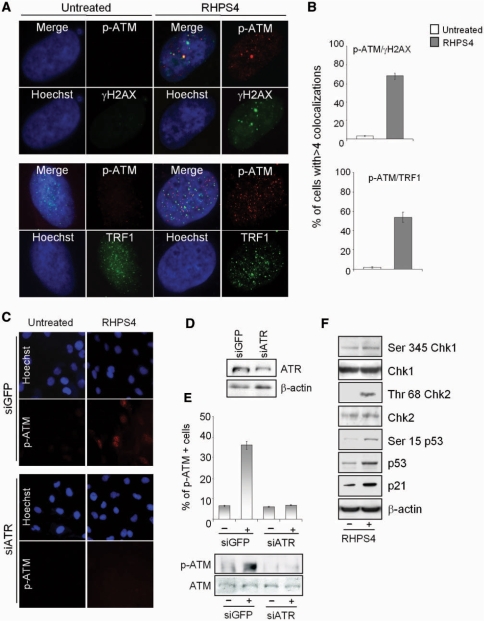Figure 7.
RHPS4 triggers an ATR-dependent ATM damage signaling pathway. BJ-HELT fibroblasts were treated with 0.5 μM RHPS4 for 16 h, fixed and co-immunostained with pospho-ATM on Ser1981 (p-ATM) and anti-γH2AX or TRF1 antibodies. Hoechst staining was used to mark nuclei. (A) Representative images acquired by a deconvolution microscopy (magnification: ×100) of p-ATM/γH2AX and p-ATM/TRF1. (B) Percentage of cells with more than four p-ATM/γH2AX and p-ATM/TRF1 co-localizations. The mean of three independent experiments with comparable results is shown. BJ-HELT fibroblasts were transfected with 100 mM of siGFP and siATR. After 48 h, cells were treated with 0.5 μM RHPS4 for 16 h and processed for IF against p-ATM. (C) Representative images of IF acquired with a Leica Deconvolution microscope (magnification: ×40). (D) Western blot analysis of ATR in siGFP and siATR transfected BJ-HELT cells. (E) Percentage of p-ATM-positive cells and western blotting of p-ATM in the indicated samples. (F) Western blot analysis of the phosphorylated form of ChK1, ChK2 and p53 in HeLa cells untreated or treated with RHPS4 for 4 days. The nonphosphorylated forms of the same proteins as well as the expression of p21 are also reported.

